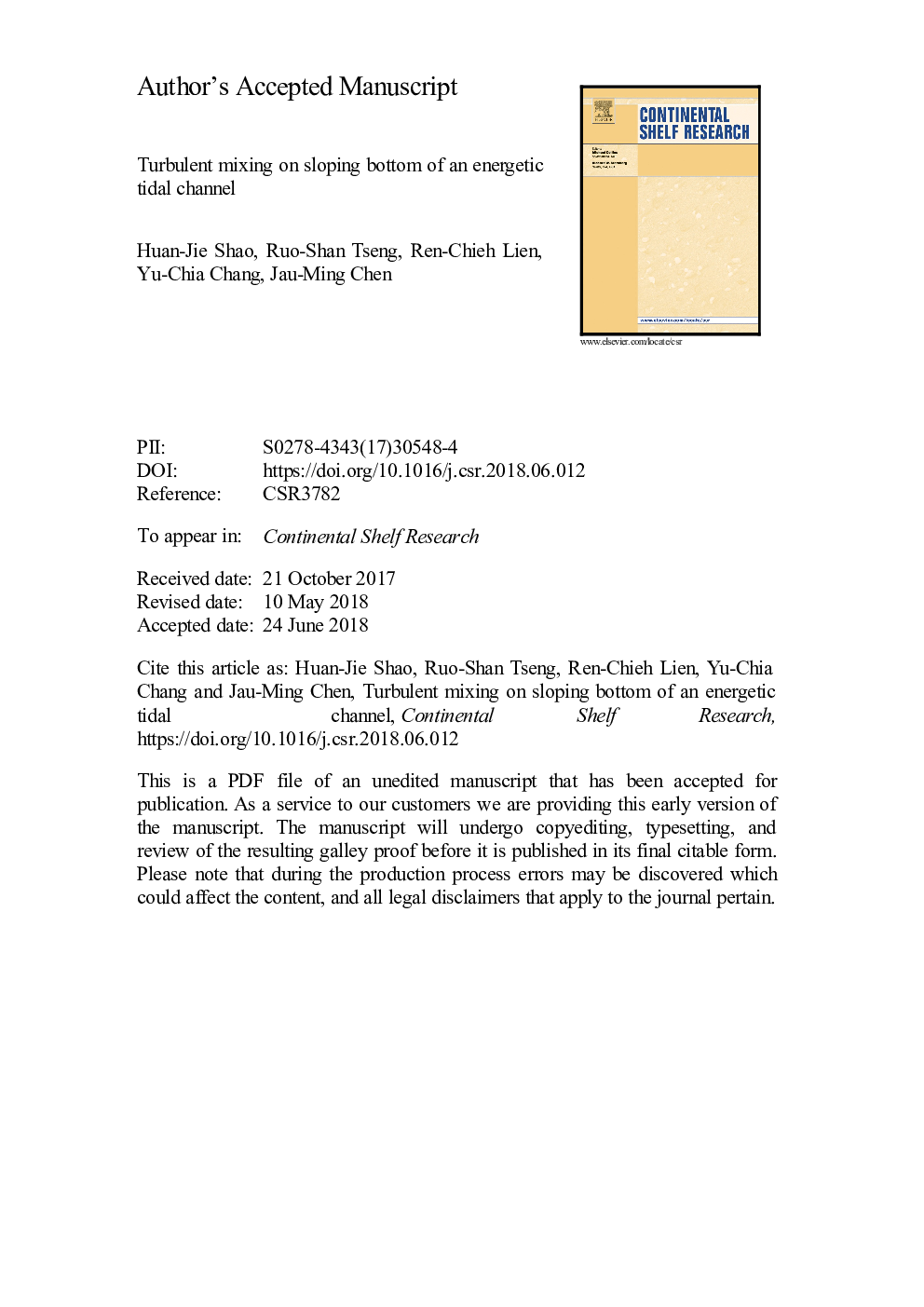| Article ID | Journal | Published Year | Pages | File Type |
|---|---|---|---|---|
| 8883984 | Continental Shelf Research | 2018 | 41 Pages |
Abstract
Measurements of turbulence dissipation, current, and stratification in an energetic, sloping tidal channel, the Penghu Channel (PHC), in the Taiwan Strait were conducted to investigate temporal variations of turbulence properties in the bottom boundary layer (BBL) under different stratified conditions. It was found that the PHC exhibits a unique feature of semidiurnal cycle of turbulence in the BBL due to the fact that current speeds during the flood are much higher than those during the ebb. Turbulent mixing in the BBL, produced mainly by the tidal current shear, has high values of dissipation (~10â5 Wâ¯Kgâ1) and eddy diffusivity and extends upward to approximately 40â¯m above the bottom during the flood. During the flood upslope flow, significant temperature drop and destratification of the near-bottom layer occur due to turbulence mixing associated with the shear instabilities, confirmed by the gradient Richardson number less than the critical value of 1/4. By contrast, stratification produced during the ebb is discernible only in the upper part of the BBL above the mixed layer. The stratification is weak (strong) during enhanced (suppressed) turbulence. The observed dissipation rate of turbulent kinetic energy is proportional to the cubic power of current speed, suggesting that the observed turbulence is generated via the boundary layer shear instability.
Related Topics
Physical Sciences and Engineering
Earth and Planetary Sciences
Geology
Authors
Huan-Jie Shao, Ruo-Shan Tseng, Ren-Chieh Lien, Yu-Chia Chang, Jau-Ming Chen,
